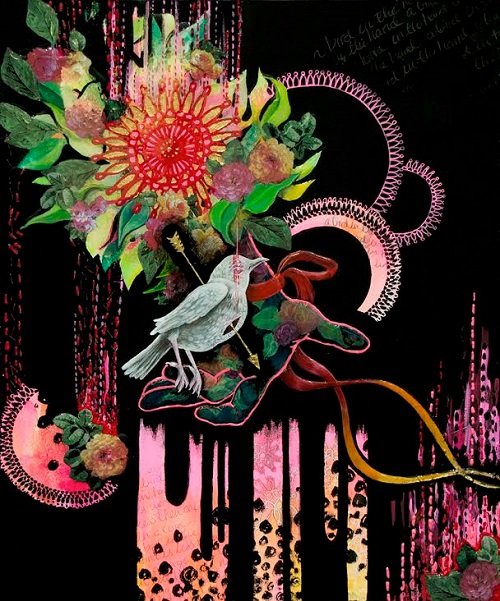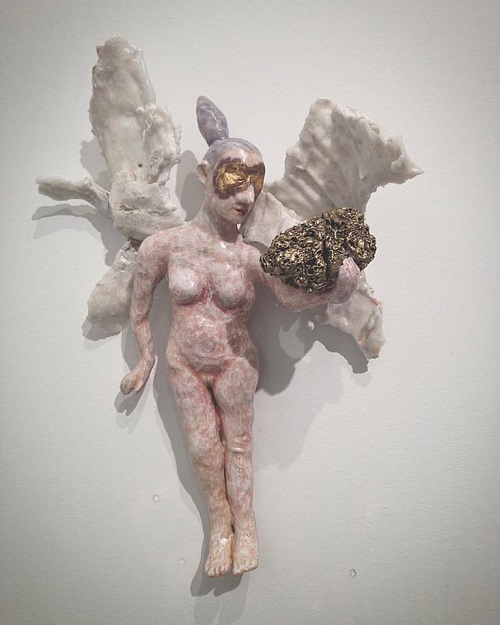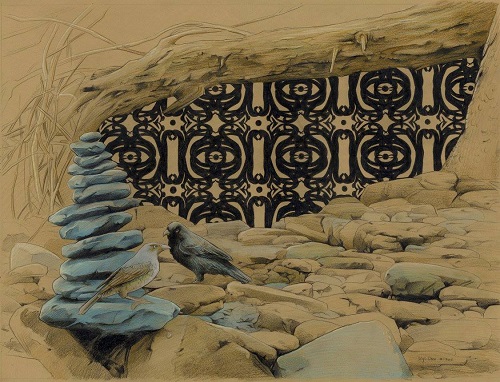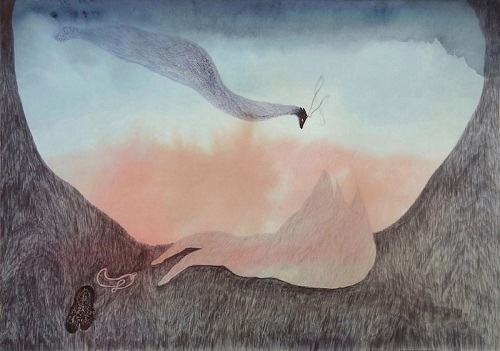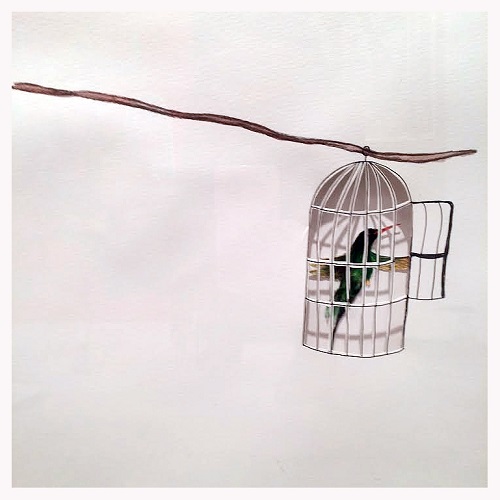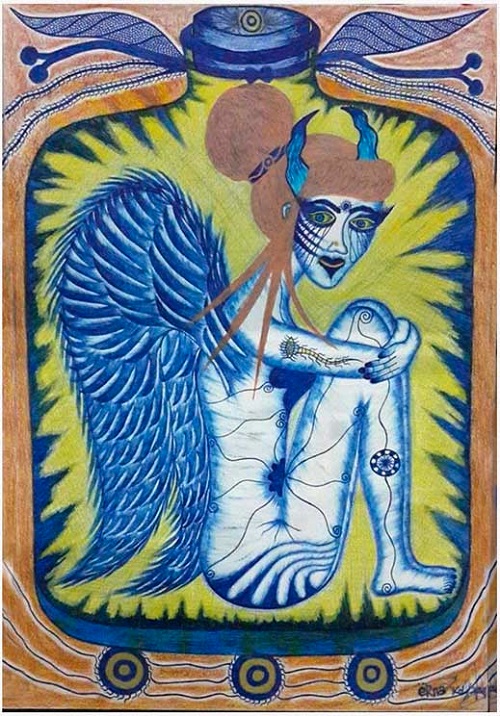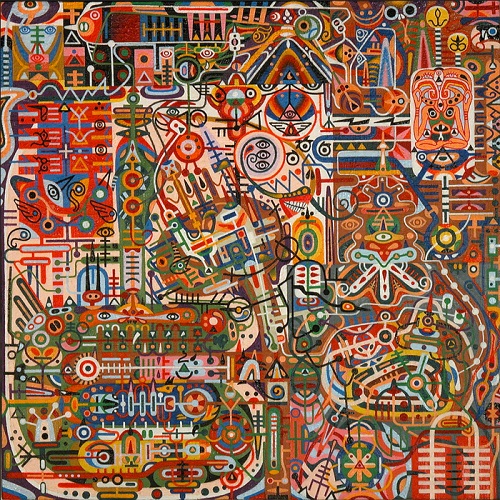The Mystery of Flight- Hieroglyphica and American Visionary .

Exhibition view of "Hieroglyphica" with Colin Christian's "Half Pint" and works by Charles A.A. Dellschau.
all exhibtion photographs are courtesy of Stephen Romano Gallery
POSTED BY: 5T1V JANUARY 23, 2016
This article appears in Manifesto of Decadence
Inge Vandormael “The Third Eye”
A couple years ago a friend took me to the outskirts of Los Angeles near Woodland Hills to teach me to be aware of my environment by listening to every sound I could hear and examining everything I could see. Everything had a purpose that directly related to me, from the dog barking off in the distance to the surrounding trees that were the watchers. A plane passed above us and he remarked that the airplane was man’s triumph over nature— transcendence. We were destined to be earthbound but through our intelligence, creativity, and curiosity we found a way to ascend into the sky and beyond.
The airplane is man’s symbolic vehicle for spiritual transcendence. How many times have you taken a flight and thought about how magical it was that you were defying human nature to be earthbound? Or were you having a panic attack because human’s were not made to fly? The airplane or spaceship is limiting to where it can take the individual. It’s a vehicle that can ascend the higher atmospheres all the way into space, and even if we develop the technology to build a vehicle that can cross the entire galaxy, it’s only our bodies that are transported. Albeit, that would be an incredible experience.
Elizabeth Shupe “Such Gentle Creatures I”
The fascination of flight has been present in worldwide cultures for thousands of years. In early Indian Vedic scriptures the flying vehicle known as the vimana was used by gods to travel through space and visit various planets. Some vimanas were so grand that they appeared like floating cities. Images on the 3000-year-old Temple of Seti I in Abydos, Egypt show low relief carvings of flying machines. In the Greek legend Daedalus engineered wings for him and his son Icarus to escape Crete. Much later with the speculations and experiments of Leonardo da Vinci and still later with air balloons, airplanes, and rockets mankind has been fascinated with the potential of flight for its commercial, warfare, and exploration purposes.
Much of what has developed in technology has been preceded by science fiction. Asimov’s Foundation series, or Lang’s “Metropolis”, or dystopian literature such as Aldous Huxley’s “Brave New World” direct our attention to the potential concerns of technology and how it might impact society and the individual. It’s the human imagination seeking expression. It’s human intelligence seeking expansion. It’s human desire seeking dominance. It’s human’s instinct to survive seeking manipulation.
All these things that drive mankind toward evolving beyond the flesh are considerations of the body, some might argue also the mind. Flight did not begin with mimicking the birds. Ascension reaches back much further than da Vinci or the pyramids. The human desire to ascend the heavens has existed as long as humans have been able to look up at the stars and sky and ask themselves, “Who am I?”
Matt Nolen “”Blinded”
Before technological advancement in mechanics people had developed a so-called spiritual technology. In the fields of mysticism and magic people employed mental methods of transpiring the physical body and ascending non-physical realms. In ancient India, as stated in the Vedas, successful yogis had the power to project their ethereal body to anywhere in the universe as a means of space travel. In modern times people still practice having out-of-body experiences, in which they claim to experience flying and even traveling to faraway places around the world and even outside of planet Earth.
Other traditions have vehicles such as the merkaba, a sort of light vehicle that one uses to travel to other dimensions. The merkaba is something that surrounds the human body and remains latent until “activated” by meditation processes, or works in which the consciousness becomes aware of the spiritual functions of the mind, body, and soul. The merkaba is a living field that responds to the stimulation of higher consciousness. And when that consciousness has developed so does the power of the merkaba, which can lead a person to experiencing ascension.
Gigi Chen “More Thoughts”
A common understanding of spiritual ascension today is not through mystical rituals but through the idea that a soul can ascend up into heaven or descend down into hell, as commonly believed in the Abrahamic traditions. Even in Eastern traditions in Hinduism, Buddhism, and Jainism there is ascension into heavens and descension into the animal kingdom or lower forms of life such as ghost bodies. Consciousness, the soul, the self, these things are the pilot and the human body is the vehicle. Running with this idea, if it were true that we were some foreign entity within the human body, then it’s understandable that our actions and desires within the body, such as flying in airplanes, would reflect that spiritual state of the soul piloting the human body. We are already “flying” in the human body, of course, some of us seem to never get off the ground.
The group exhibition Hieroglyphica is on view at Stephen Romano Gallery along with the solo exhibition Charles A.A. Dellschau: American Visionary. Both exhibits deal with the relationship between spirituality and flight. Define spirituality as you will.

El gato Chimney "The Conjurer"

Exhibition view of "Hieroglyphica" Left to Right: Gigi Chen (detail), David Moleski, Nyahzul Blanco, Jodie Lyn-Kee-Chow, Shawn Thornton, Andreas Cellarius (1660).

Exhibition view of "Hieroglyphica" Left to Right: Lori Field, Inge Vandormael, David Moleski, Gigi Chen (bottom).
Cendrine Rovini’s “Dream of Flight” perfectly supports the thoughts previously discussed. In the painting the circular sky space is tiered by transitioning colors beginning with a warm red orange that blends into a light blue that becomes absorbed into the highest cool blue violet. Suspended in the sky is what appears to be the blue ethereal body of a person rising from their earthly body, which extended on the gray ground. The line work of the physical world that frames the sky runs vertical, which draws the eye upward. The forms are abstract, which gives us the sense that the experience of flying in a dream cannot be expressed through the logical forms that we associate with flying during our awakened life.
Cendrine Rovini “Dream of Flight”
In Jodie Lyn-Kee-Chow’s “God Bird Will Set You Free”a caged bird has an opportunity to fly out of the opened cage door. If the cage is opened then the bird is not really trapped, it simply needs to fly out of the cage. With the word ‘God’ in the title it perhaps denotes a person’s dependency on an outside force to solve one’s problems. Do we really need to pray to God to deliver us when we have the power to set ourselves free?
Jodie Lyn-Kee-Chow “God Bird Will Set You Free”
Erna Kd’s “The Winged Sorceress” appears to be enclosed in a bottle. Perhaps like a djinn she is waiting to be released, but that would suggest enslavement as a debt for her freedom. In several religious traditions, such as the Vedas, there are different concepts of heaven. The material universe is composed of the lower hell realms, the middle planetary system that Earth is within, and then there are the higher planets where ghosts, spirits, and gods exist. Through good and bad works a person can either take birth in the lower planetary system, the hells, or in the higher planetary system, the heavens. In this case heaven is not the same conception as the Abrahamic conception of heaven. This heaven is still within the system of samsara, and so it is not consider a place where transcendental souls wish to go, since it’s still part of the prison. The other heaven, what most people traditionally view heaven as, exists outside of the material bubble, and that is where one is free from the suffering and conditioning of material illusion.
Erna Kd “The Winged Sorceress”
“The Winged Sorceress” is an interesting depiction of ascension because not everyone’s conception of ascension is transcendence from samsara, or that there is samsara for that matter, whether they believe in God or not. Ascension for some, many, is to have control over the elements, to be able to manipulate nature according to their will. For some, many, they don’t act with their true will, their highest will. They are pursuing the whims of their senses and lower ego. “Do what thou wilt shall be the whole of the Law. Love is the law, love under will.” This Thelemic law suggests an understanding and execution of Will beyond the ephemeral senses and lustful impulses. In this context could “The Winged Sorceress” be one’s highest self, not waiting to render service after being freed, but simply waiting to release oneself from the imprisonment of ignorance?
Nyahzul C. Blanco’s “The Empress” incorporates a collage of natural imagery related to flight. An eagle sits upon the back of the neck of the Empress like a guardian angel and the trees rooted into the earth conceal her lower form. In the background are the faint images of nude men and women. If this painting relates to the Empress Tarot card then it supports the idea of ascension as manifesting one’s fullest self. The Empress card is a feminine card of natural abundance and connection with the universal energy. She teaches us that through nature we can connect with the entire universe. On a microcosmic individual level, through our own body and mind we can connect to higher intelligence and creative expression. Ascension does not always take place outside of the body. In fact, through studying the mystical and magical traditions one will quickly learn that it begins within the body, within the mind.
Nyahzul C. Blanco “The Empress”
Shawn Thornton’s “Black Pyramid Mediation” is another abstract perspective in understanding the esoteric meaning of spiritual ascension. The bottom tier of a pyramid is composed of many bricks and each tier rising to the apex requires less bricks until one reaches the top where only one brick stands with a point directed upward to the heavens. This work points to the key idea of ascending the many distractions of the mind to a single-pointed focus— it might be considered the first step. Ironically, the artist does not illustrate an actual pyramid, nor does he direct the audience where to focus on the painting. It is busy with pathways that lead the eye to scrambling imagery and multiple colors. Among the variety of shapes there are multiple black triangles that might be the black pyramid we search for in the painting. But the black pyramid might also suggest the pyramid that you don’t see in the painting. The shadow pyramid is not in the light, it is in the darkness of your subconscious.
Shawn Thornton “Black Pyramid Mediation”
CHARLES A.A. DELLSCHAU
The other “wing” of the gallery exhibiting Charles A.A. Dellschau shows in part the great work of a man obsessed with flight. Only twenty-four of the over five thousand paintings that were originally in twelve hand-bound books are on display at Stephen Romano Gallery.
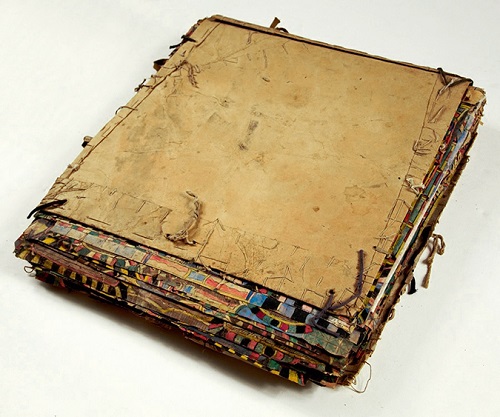
The legacy of the Charles A.A. Dellschau drawings is as fascinating as the artwork itself. In the mid-1800s Germany was in the throes of political turmoil due to movements that arose from parties seeking to unite the individual German states into one country. When the King of Prussia rejected the offer to rule over the united German states a revolution resulted. In the midst of this turmoil Dellschau immigrated to Houston, Texas in 1853, perhaps to escape the political conflicts. Although we do not have information on his political involvements in Prussia, it is likely that he was involved with the demonstrations and revolutions of 1848. Many of the revolutionists from the German states, the Forty-Eighters, immigrated to the United States, many of whom entered through the port of entry in Galveston, Texas.
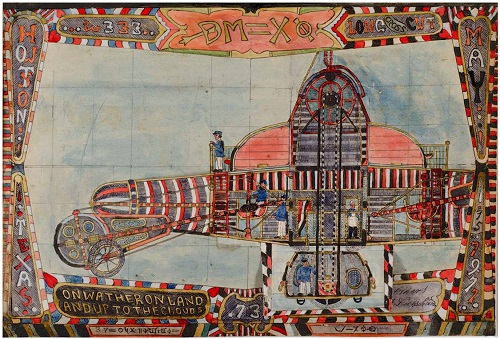
Plate 2333 Long Cross Cut on Wather on Land and up to the Clouds, May 15, 1911
In 1861 Dellschau married a widow with a five-year-old daughter. They had three children, but in 1877 his wife and only son died. In 1879 Dellschau remarried, but within a year his second wife died. Then in 1893 one of his daughters died of tuberculosis, as did Anton Stelzig, the husband of his stepdaughter. Dellschau retired from being a butcher and moved into the attic room of his stepdaughter’s house.
One day Dellschau opened up the pages to the Houston Press and read a letter to the editor by W.H. Brown who had proposed plans for a flying machine. Since childhood Dellschau had a fascination with flight and had even assisted Frederich Wilhelm Schultze, who had designed the “Hydro-wheel auto.” Dellschau responded to the Houston Press letter with a counter letter in his journal that detailed his own design. This reaction to W.H. Brown’s letter inspired Dellschau to begin writing his memoirs, supposed memoirs, of his experiences with a secret aviation society.
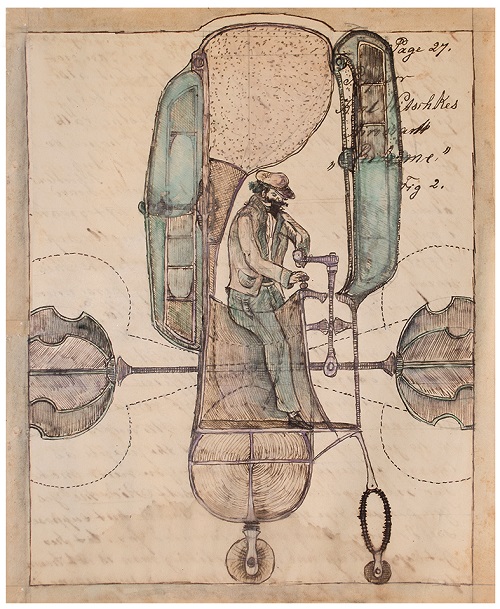
Excerpt from “Recollections”, Dellschau’s first known work. Dated 1898

Exhibition view of "Hieroglyphica" at Stephen Romano Gallery, Brooklyn NY.
He began a compilation of illustrations that were supposed renderings of actual airship schematics produced by a secret society club known as the Sonora Aero Club. According to Dellschau these illustrations portrayed actual airships, known as Aeros, which were tested in the deserts of Sonora, California during the mid-19th century— the time of the California Gold Rush. The secret to the success of the Aeros was the NB Gas formula that one of the members had concocted. Each member designed their own Aero. Dellschau, due to his draftsmanship, was accepted into the club to act as scribe for their designs.
Interestingly, the drafts that he provided of the Sonora Aero Club were not drafted during the club’s heydays 1854 – 1858, but decades latter in 1898, and twenty-three years thereafter. If the Sonora Aero Club existed were there ever original drafts? They would not have accepted Dellschau to just draft the designs forty years later. It is remarkable that if this Club existed that Dellschau had the memory to recall the mechanics of each Aero. And considering that over the course of twenty-three years he illustrated thousands of Aero depictions it is more reasonable that this great work was a work of great science fiction.

Plate 1953 Aiar Pressure Motor, July 10, 1909
From 1898-1900 the illustrations were mostly technical with side notes filling the framework explaining the inventor of each craft. The diagrams expose a two-dimensional skeleton of the Aero with no adornments or artistic expression. Very rare is there the presence of a pilot or passenger within the craft. In 1899 there is another set of illustrations that tell the narrations of several pastimes from the members of the Sonora Aero Club. Contrary to the blueprints these illustrations are composed of figures, landscapes, and narration. During these earlier years of composing his memoirs there is no consistency in his depiction of the Aeros as shown in later years. It appears that he was gathering the elements of his narration but had not yet discovered the formula. In 1900 and thereafter the narrations and technical diagrams come together.
Dellschau himself was not an inventor or pilot but was the designated draftsman for the club. He did not freely give away all the information of the Sonora Aero Club, but instead encoded the watercolor paintings with a secret language. Decades after his passing Pete Navarro broke the code, however, the meaning has still not been fully interpreted. Prior to World War 1 the illustrations told a narration of the Sonora Aero Club. We are introduced to key members in the club and are given accounts of their expeditions and attempts at flight. By WW1 the illustrations continued with the theme of flight and Aeros, but there was a dramatic shift in the narrative.
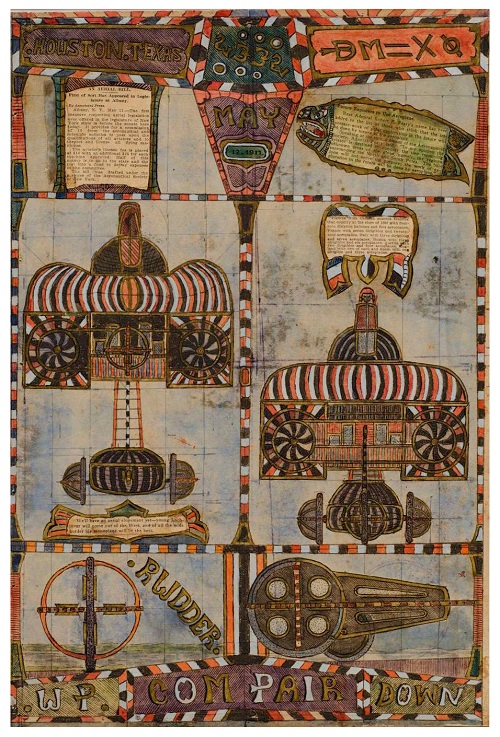
Plate 2333 Long Cross Cut on Wather on Land and up to the Clouds, May 15, 1911
Dellschau was a Prussian immigrant, so as WW1 loomed on the horizon he had been paying special attention to the political shifts in Europe, especially Germany. His reaction to political tension and ultimately the Great War reflected in his illustrations. He developed the “Press Blooms” that incorporated newspaper clippings into his drawings. The content of the clippings were mainly from the Houston Press and were in regard to current flight news concerning the current experiments. “French Flyer Drops Bombs on Zepplin,” “British Officer Hurt in U.S. by Aeroplane’s Fall,” and “Seaplane is Lost with Five Flyers,” are a few of the headlines that made it into Dellschau’s War Blooms. Even after the war his Press Blooms continued covering the advancements and experiments of aviation. “China Awakes to Use of Airplane.”
No longer were Dellschua’s works fantastical renderings of science fiction but were now integrated with reality. By including real world current events into his fantastic world his dreams and wonder of ascension are met with the reality of current science. Dellschau might have never belonged to a secret society known as the Sonora Aero Club. He might never had been the draftsman for the Sonora Aero Club. But as media began giving serious attention to the scientific advancements of aviation, and the use of aviation technology in war, Dellschau gathered this information and immortalized it within his artwork. He thus succeeded in being a scribe for the golden age of flight, providing essential factual information within an abstract artistic formula.
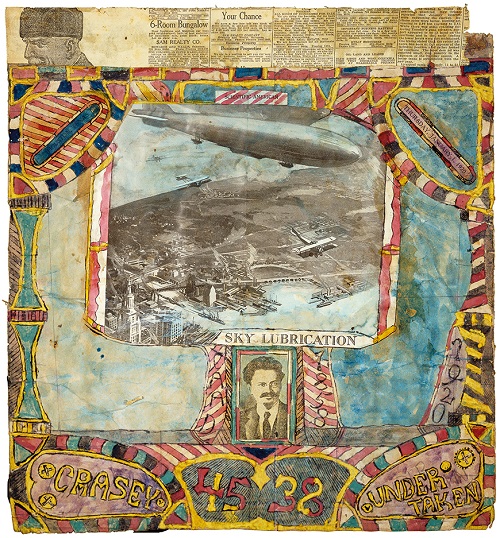
bottom: Plate 4538 Crasey Undertaken, January 1, 1920
Over this twenty-three year period of creating these plates and Press Blooms there were gaps of production. We do not know if Dellschau took a break or if there were works that were destroyed. Frightfully it’s likely the latter. Dellschau never exhibited these works and upon his passing his collection was boxed up in an attic for four decades until a house fire led to the works being disregarded to the sidewalk trash heap and then to the city landfill. The works were salvage by a used furniture dealer Fred Washington who came into possession of them after they were discovered in the landfill, but even then the works were forgotten in his warehouse.
By chance the books were discovered and ended up in the hands of several different collectors and galleries. One of the individuals fortunate to have discovered the books was U.F.O. enthusiast Pete Navarro who deeply investigated the works and co-wrote the book, “The Secrets of Dellschau.” In this account Pete goes through the discovery of these books and how the collection was ultimately broken up and dispersed.
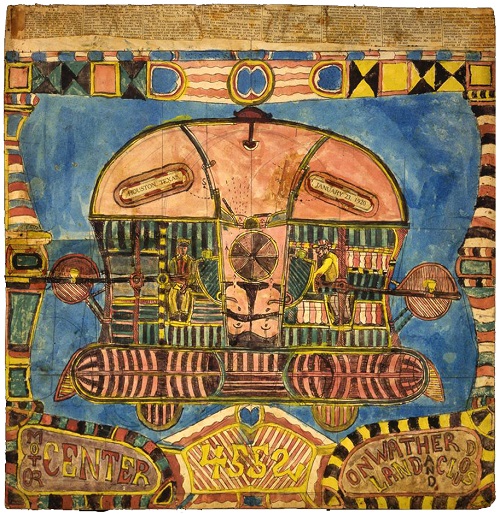
Plate 4553 Centers Deck, January 31, 1920
What we do know is that we don’t know if the Sonora Aero Club actually existed, and if so, did these flying contraptions exist? If they did not, what was Dellschau’s purpose in creating thousands of coded illustrations? There are notes in his journal that one day the Wonder Weaver would break the code. If this was the case this might be the only evidence we have that Dellschau intended these works to eventually be released to the public, and evidence for why he devoted thousands of hours and literally decades to create them. But we still don’t know fully the message he intended to deliver. The process of learning about Dellschau and his Press Blooms somewhat resembles cracking the Mayan code, to a much lesser degree.
What we do know is that from revolutions to family deaths Dellschau’s life was struck with tragedy. During the end chapters of his life’s narrative he invested countless hours into creating artworks that reflected a period in his life that was between revolutions and love. We don’t know much about what he did during his first years in America, but when he began painting this Aeros he chose that time of his life to create this narrative— perhaps because it happened, or maybe because it was an ideal time that his family could not trace and reveal inconsistencies in his claims. He was fascinated with flight and the use of codes and a secret society reveal that he was inspired beyond the science of aviation. As a butcher he daily dealt in the field of death. Even his Press Blooms are visceral in their dissection of the airship’s anatomy. And though he might never had ascended in an airplane by creating these works of art he transcended his life after death.
Charles A.A. Dellschau left us a great mystery to be solved, one that might be impossible to solve. As it has been the experience with Pete Navarro, Stephen Romano, and so many people who have come in contact with Dellschau’s work a sense of excitement and curiosity is aroused. The type a curiosity that takes one through countless hours studying Dellschau’s artwork to see if they can decipher the code. It is that curiosity that inspires mystics and magicians to delve into occult matters. It is the same curiosity that inspires man to defy the laws of nature and from his own creativity to manifest vehicles that can ascend beyond our limits. In the two-dimensional color plates height and width, the horizon and the heavens, reflect the formula for transcendence. The third dimension, depth, is a line drawn inward to our own psyche.
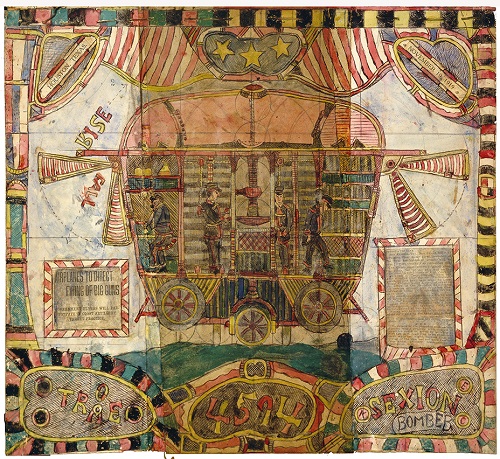
Plate 4514 Sexion Bomber 1919
“Hieroglyphica” and “American Visionary” will be on view at Stephen Romano Gallery, Brooklyn, New York until January 31 2016.
Hieroglyphica Artists Include:
Esther Pearl Watson, Gigi Chen, Cendrine Rovini, Tine Kindermann, Jodie Lynkeechow, Matt Nolen, Dolorosa De La Cruz, Rene Pierre Allain, Erin O’Shea, Elizabeth Shupe, Tamara Kostianovsky, Heiko Müller, Nyahzul C Blanco, David Molesky, Inge Vandormael, Erna Kd, Maria Kreyn, Lori Field, Jel Ena, El Gato Chimney, Barry William Hale, Colin Christian, Rithika Merchant, Darcilio Lima, William Mortensen and many others.

Exhibition view of "Hieroglyphica" at Stephen Romano Gallery, Brooklyn NY. William Mortensen death mask, 1930's Theosophical prints, El Gato Chimney top "Secret Pacts" and bottom "The Conjurer",
Maria Kreyn , Romeny De Hooghe (1935) photograph: Stewart Farrar "Alexandrian Witchcraft Initiation Ceremony of Janet Farrar (nee Owen), U.K. 1970"

Exhibition view of "Hieroglyphica" at Stephen Romano Gallery, Brooklyn NY. Colin Christian "Teeth" 2014, Antique books including "Hieroglyphica" By Romeny De Hooghe, Dictionsaire Infernelle 1860, Encyclopedia of Withcraft 1940's, "The Dance with Death" 1880's. "Grimoreum Verum", date unknown.

Exhibition view of "Hieroglyphica" at Stephen Romano Gallery, Brooklyn NY. Jel Ena, Matt Nolen, anonymous photograph 1950's.

Exhibition view of "Hieroglyphica" at Stephen Romano Gallery, Brooklyn NY. Heiko Muller, Anonymous Spirit photograph, Erin O'Shea.

Exhibition view of "Hieroglyphica" at Stephen Romano Gallery, Brooklyn NY. Heiroglyphica exhibtion view with Colin Chrsitian "Half Pint" 2014 in the foreground.

Exhibition view of "Hieroglyphica" at Stephen Romano Gallery, Brooklyn NY. Tine Kindermann and Steven Baines.

Exhibition view of "Hieroglyphica" at Stephen Romano Gallery, Brooklyn NY. William Mortensen "A Tantric Priest", Romney De Hooghe (1735), Darcilio Lima, Barry William Hale,
Dolorosa De La Cruz "Invocation of la Reina Roja 2", Tine Kindermann.

Exhibition view of "Hieroglyphica" at Stephen Romano Gallery, Brooklyn NY. ESTHER PEARL WATSON top "Just Got out of Jail (Trivet)" 2015 bottom "A Place Between Benbrook and Granbury" 2015, Anonymous French S and M photos c. 1920's, William Mortensen "The Incubus" 1926, Rithika Merchant top "The Moon Devours Her Children", 2015 and bottom "Orbiter", 2015


